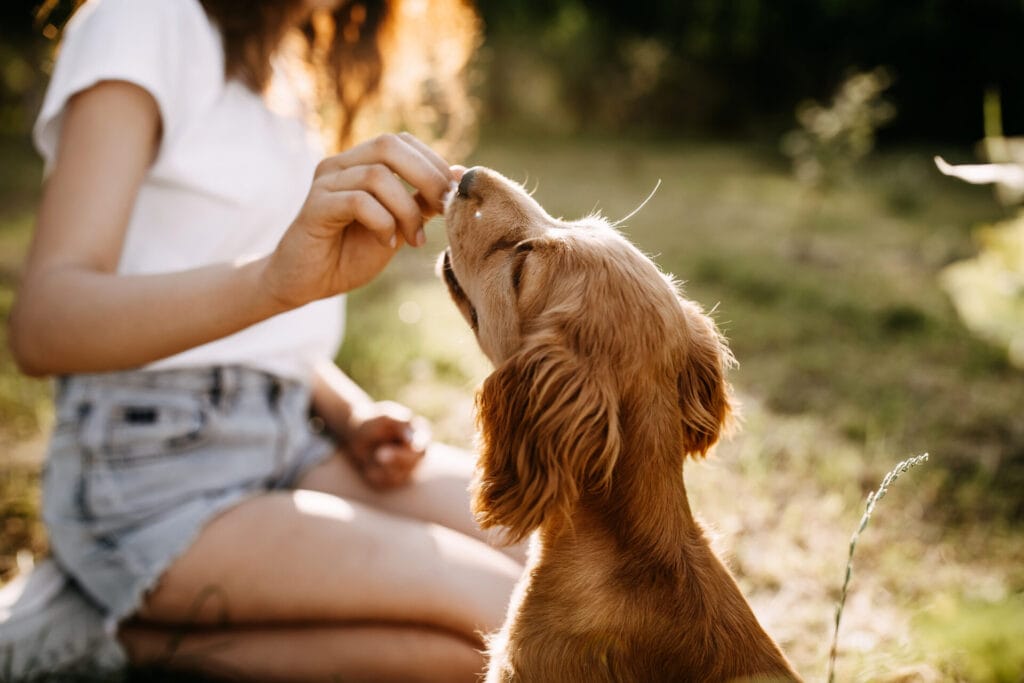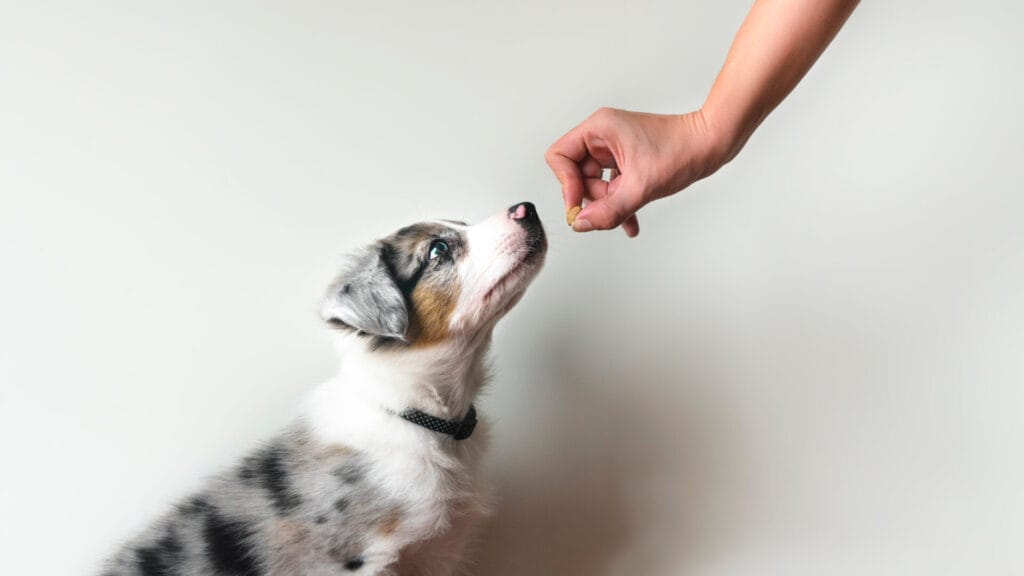As a dog owner, you will have to learn about dog behavior and training. But, while pursuing this knowledge, you will come across a wide variety of dog training methods and different “points of view” that dog owners and trainers stand by. If you are following different dog trainers online, it can be confusing about the best methods. Should dogs never be punished? Are all dog training tools bad? Are there any good ones? These might be questions you ask yourself, and fortunately for you, we are going to discuss all of this.
There are two main types of dog training: classical conditioning and operant conditioning. You’ll probably come across these two terms most often when doing research. Almost all dog training methods, whether the dominance theory, force-free, or balanced, can be understood better if we fully understand these two types of training.
Dog Training Methods: Classical Conditioning
Classical conditioning was discovered by Russian physiologist Ivan Pavlov when he conditioned his dogs to salivate when they heard a tone rather than when presented with food. Before we dive deeper into this experiment, let’s go over some terms associated with classical conditioning so we can understand it better.
Classical Conditioning Terms To Know
Unconditioned Stimulus: something that elicits an involuntary response. For example, the smell of your favorite food makes you feel hungry. The unconditioned stimulus is the aroma of the food, and the involuntary response is your feeling of hunger.
Conditioned Stimulus: a once neutral trigger but now leads to an automatic response. So let’s go back to the previous example in which the aroma of your favorite food elicited the feeling of hunger. Every time you feel hungry because of that odor, a whistle is blown. Eventually, if we repeat this process, the sound of the whistle will elicit your hunger, even if the food is not present.
Neutral Stimulus: something that does not trigger a response initially. But, if paired with an unconditioned stimulus, it would eventually become a conditioned stimulus. Going back to our previous example, the neutral stimulus would be the whistle. At first, the whistle means nothing to you. But, when the sound of the whistle pairs with the scent of the food, it becomes a conditioned stimulus.
Unconditioned response: an involuntary response to a stimulus. For example, your mouth watering when you smell food is an unconditioned response. You cannot control that response (mouth-watering) when presented with the stimulus (the aroma of food).
Conditioned response: a learned response to what was a neutral stimulus. Remember when we conditioned you to feel hungry when the whistle sounded even though no food was present? Well, the feeling of hunger is now a conditioned response because we “trained” you to feel hungry when you hear the sound of the whistle (previously neutral stimulus, now conditioned).
Pavlov’s Experiment
Now that we understand these terms better, let’s dive into Pavlov’s experiment that leads to his discovery of classical conditioning.
Pavlov performed a similar experiment to the examples we used earlier. He noticed that his dogs salivated when presented with food. The salivating here is an unconditioned response to an unconditioned stimulus (the food). Next, he paired the food with the sound of a tone. The sound is currently a neutral stimulus–it means absolutely nothing to the dogs. But, they only hear the tone when they are salivating. Pavlov repeated this process until the tone became a conditioned stimulus that elicited a conditioned response. Because the dogs heard the sound of the tone when they were salivating, they now associate the sound with the food resulting in them salivating. Now, Pavlov can play the sound, and his dogs would salivate even though there is no food around.
Classical Conditioning Today
Pretty cool, right? But, how can we use this in our day-to-day lives with our dogs? Well, we can use classical conditioning to tell our dogs when they do something right or wrong. For example, if you give your dog a treat every time you say the word “good”, they’ll eventually associate that word with being rewarded. The word “good” is now a conditioned stimulus that elicits the conditioned response of happiness and excitement.
Classical conditioning can also be used to decrease undesirable behavior like reactivity or aggression. For example, let’s say you have a dog reactive dog–meaning your dog barks and lunges toward other dogs. Every time your dog sees another dog, you give them a bunch of treats. You repeat this every time your dog sees another dog. Eventually, your dog realizes that other dogs trigger the appearance of treats. Now, instead of barking and lunging at other dogs, your dog goes straight to you for treats (conditioned response). Moreover, your dog begins to associate other dogs (conditioned stimulus) with treats.
Dog Training Methods: Operant Conditioning
Operant conditioning differs from classical conditioning because it teaches that voluntary actions have consequences. There are four quadrants of operant conditioning and each one determines whether the voluntary behavior elicits a negative or positive reaction. The four types of operant conditioning are positive reinforcement, negative reinforcement, positive punishment, and negative punishment.
Operant Conditioning Terms To Know

Positive = adding or giving (when referring to positive, remember a + sign)
Negative = subtracting or taking away (when referring to negative, remember a – sign)
Reinforcement = encouraging a desired behavior so it is repeated
Punishment = discouraging an undesired behavior so it is not repeated
As we learn about the four quadrants of operant conditioning, remember these basic definitions as they will help us understand the larger terms.
Positive Reinforcement
Positive reinforcement is the addition of something pleasurable to increase the likelihood of the behavior being repeated. Remember, positive means adding, and reinforcement means encouraging a desired behavior. So in this case, we are adding something the dog likes (treats, toys, praise, etc.) to encourage good behavior. For example, if you call your dog and they come, and you reward them with really yummy treats, the chance that they are going to come the next time you call them has increased.
Positive reinforcement is one of the best methods to use when teaching your dog new behaviors or tricks and to encourage them to overcome their fears. Dog owners and trainers that use force-free training, are primarily using positive reinforcement.
Negative Reinforcement
Negative reinforcement is taking something unpleasurable away to increase the likelihood of a behavior being repeated. Essentially, negative means to take something away and reinforcement is encouraging a desired behavior to be repeated. With negative reinforcement, we are taking away something the dog does not like to encourage a behavior. For example, you push your dog’s bum to the ground to get them to sit. When their bum touches the ground, you release the pressure. The pressure is aversive (something the dog doesn’t like). When you remove it (remember negative = taking away), you are increasing the chance your dog will sit when you tell them because they don’t want that pressure.
Negative reinforcement can be used in other ways and can be especially beneficial if your dog has difficulty walking while on a leash. This is also the method in use when e-collars are used as it applies an aversive stimulus (the sensation of the collar) until the dog performs the desired behavior.
Negative Punishment
Negative punishment is taking away something your dog likes to decrease the likelihood of a behavior being repeated. When a dog performs an undesired behavior, try implementing this training method. For example, a dog chews your favorite pair of shoes, so you put them in their crate as a “time-out”. You took away their freedom, the thing they desired, to punish them for their unpleasant behavior. Another example is when your dog jumps up on you expecting your attention, and you completely ignore them or even leave the room. You took away something they desired (you or your attention) to teach them that jumping isn’t going to get them what they want.
Negative punishment can be used in both good and bad ways. The first example of putting your dog in a “time out”, can create an adverse effect as they’ll soon associate their crate with punishment when it should be associated with positive things. The other example, removing access to yourself when your dog is jumping on you, can be effective and doesn’t have any adverse effects.
Which Dog Training Methods Are Best?
So now we understand the basis of all dog training methods, but, how do we know which one to use? The answer depends on your individual dog, but here at What The Pup we are positive training only is our advice always.




















